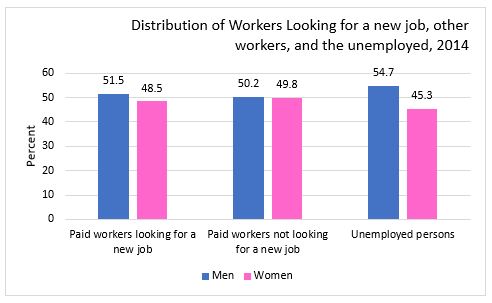The Economics and Statistics Division maintains archives of previous publications for accountability purposes, but makes no updates to keep these documents current with the latest data revisions from Statistics Canada. As a result, information in older documents may not be accurate. Please exercise caution when referring to older documents. For the latest information and historical data, please contact the individual listed to the right.
<--- Return to Archive
For additional information relating to this article, please contact:
July 25, 2018STUDY: WORKERS LOOKING FOR A NEW JOB, 2014 Statistics Canada has released a study entitled "Workers looking for a new job", which uses data from the Longitudinal and International Study of Adults (LISA) to provide information on individuals looking for work even if they are already employed. The study examines the reasons why workers want to look for a new job, and explores links between looking for a job while employed, the characteristics of job seekers and their level of job satisfaction.
The study answers the following questions:
1-How many workers are looking for a new job? How do they differ from other workers and the unemployed?
2-What are the reasons given by workers looking for a new job, and at what wage level would they agree to change jobs?
3-What are the factors associated with job search among employed people, including the degree of satisfaction with the current job?
According to LFS and LISA data, on-the-job search has been on the rise over the last forty years, with the proportion of paid workers looking for work more than doubling from 1976 to 1995 in Canada. One reason for people seeking employment while still working may be the costs associated with the job search, including information and technology costs.
Those looking for work while working are slightly more likely to be men (51.5%) than women (48.5%). This difference is slightly less for paid workers not looking for a new job, but greater for unemployed persons.

Looking at age groups, those between the ages of 35-54 are more likely to be searching for work while employed compared to the other age groups. The lowest proportion of paid workers not looking for a new job are in the 18-24 age cohort, and paid workers looking for a new job are lowest in the 55 and over age group.

Working conditions also play a part in whether workers currently working search for work. Workers looking for a new job in 2014 were less likely to have a full time or permanent job, to be covered by a collective agreement, or to participate in a pension plan at least partly supported by their employer. A change in job responsibilities, complexity, or pace of work also increased the likelihood of paid workers seeking new employment. Those who had experienced a wage increase over the last two years were also less likely to be seeking new employment while still working.
Reasons workers stated for looking for a new job include (from highest frequency stated to lowest - multiple responses allowed)
-Want a better paying job
-Want a job that matches qualifications better
-Want better working conditions
-Dissatisfied with current job
-Want to work more hours
-Want benefits
-Want a job closer to home
-Other reason
-Worried about losing current job
-Want a job in another region
-Want to work fewer hours
Other conclusions reached by the study include:
Workers looking for a new job want to earn 23% more than their current wage. In contrast, the unemployed seem more willing to accept lower wages given the urgency of finding a new job.
There is an important link between job satisfaction, and that job satisfaction is a strong predictor of voluntary departures. A lower level of job satisfaction is also linked to lower work productivity and higher absentee rates.
Age, seniority, level of education, and level of job satisfaction all influence probability of looking for a new job. Younger workers with less seniority, lower earnings, and lower job satisfaction were more likely to seek a new job compared to older cohorts.
Only some factors proved different for men, compared to women. For example, women who were single and without children were more likely than those in a relationship to look for a new job while employed. As well, employment-related financial considerations did not appear to have a significant impact on women's decision to look for a new job.
Even after taking differences in personal characteristics, earnings, and other working conditions into account, the probability of a worker looking for a new job while employed was seven times higher for those who were "not very or at all satisfied" with their job compared to those who were "satisfied or very satisfied."
The study, "Workers looking for a new job" can be downloaded (free) from the Statistics Canada website.
<--- Return to Archive